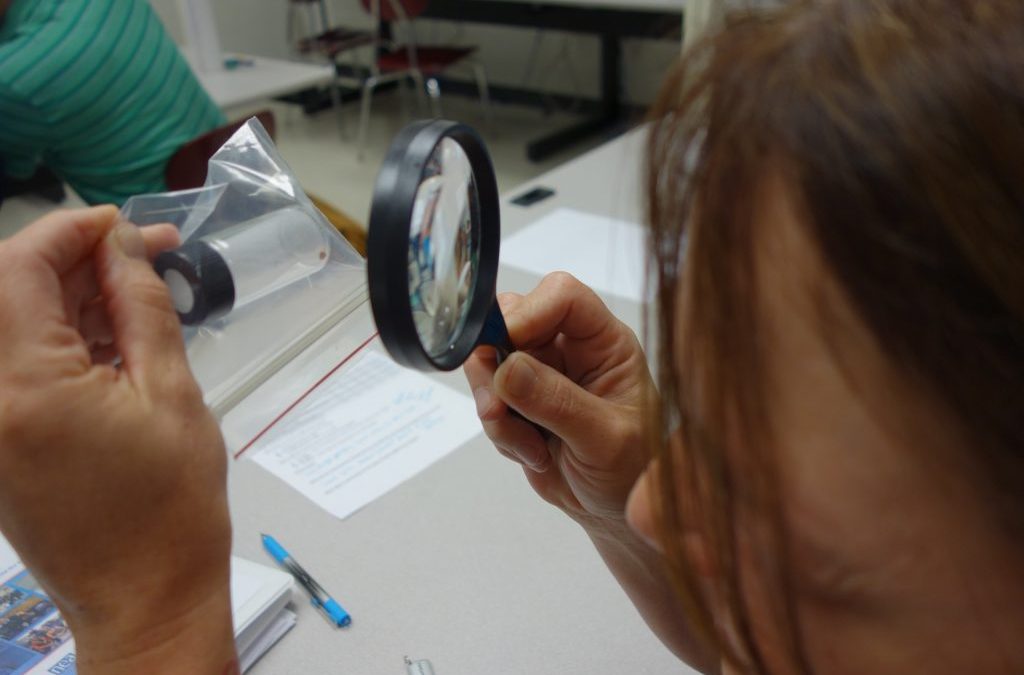By. Julian Cooper, Community IPM Project Manager, IPM Institute of North America
This fall, over 50 million students and six million staff will return to schools across the country1. Unfortunately, an evaluation of school systems in 15 states revealed almost half violated legal or district pest control requirements2. Integrated Pest Management, or IPM, is a proven, cost-effective approach for pest management in schools without unnecessary use of pesticides.
Westville School District was one of the first districts in Illinois to incorporate IPM into their pest management procedures. With help from Susan Ratcliffe at the University of Illinois and the Illinois Department of Health, Westville was able to reduce their pesticide sprays by 87% by “thinking pest” and changing simple, every-day practices such as storing food in plastic containers. Their long-time pest-control technician is now used to diagnose and treat specific problems rather than for routine pesticide applications3.
Students spend a major part of each day in schools and exposure to pests and pesticides in the learning environment can have dramatic effects on their health. School pests are responsible for physical harm, food poisoning, and asthma from allergens. Asthma affects about 9.5% of children and is the primary reason for student absences4. Cockroach and mouse allergen levels are significantly correlated with asthma and exposure is seen disproportionately in racial and ethnic minorities5. In addition, children are particularly susceptible to the pesticides used to treat school pests, as they process toxicants differently compared to adults, have relatively rapid metabolic functions, and have more exposure due to their behavior6. It is estimated that 50% of pesticide exposure happens in the first five years of a child’s life7.
IPM coordinates information on pest biology with preventative measures such as sanitation and exclusion to mitigate human and environmental health risks and prevent pests from reaching economically damaging levels. For example, as an alternative to routine monthly pesticide sprayings around entryways, IPM recommends installing door sweeps on exterior doors, which can reduce pest infestations by 65%8.
Schools adopting IPM practices have found immediate, quantitative differences in their pest management situation – up to $32,000 in annual pest control cost savings and a 90% reduction in pest complaints have been reported9. The cost for schools transitioning to IPM is minimal, averaging only $50-100 per year10.
In 2005, Spring Independent School District (Spring ISD) in Texas began training school staff, including groundskeepers, custodians, and kitchen staff, on IPM procedures. The result was a 45% decrease in pest-related work orders and a 70% reduction in chemical applications with no increase in the pest control budget. The district now reports virtually no indoor pesticide applications and uses green, environmentally friendly products when necessary10.
School staff collectively determine school health, and Spring ISD is a model for how proper education can help reduce pest and pesticide incidence. Successful IPM relies on the cooperation of all school personnel to coordinate pest management. A number of educational tools exist for schools seeking to incorporate IPM into their existing pest control strategies. Interested schools can contact their state department of agriculture or university extension program to seek out training opportunities. Online databases, such as eXtension.org, can help focus searches.
When state resources are not available, interested schools can turn to online training for their IPM needs. One example of online IPM training is Stop School Pests, a free training website hosted by the IPM Institute of North America with support from the North Central IPM Center and the National Education Association. Stop School Pests offers individualized training modules for nine different school staff roles, including custodians, nurses, and teachers. Users who complete the training receive a certificate recognizing their commitment to IPM and school health.
Addressing and reducing risks to student health in our public schools cannot be left to chance. IPM is recommended by the American Academy of Pediatrics as a proven, cost-effective approach for creating healthy, safe spaces for students and staff11. Through proper education and by prioritizing human and environmental health, IPM can make a substantial difference in eliminating school pests and pesticides.
Julian Cooper received his M.S. in crop science from the University of Illinois and is currently the Community IPM Project Manager at the IPM Institute of North America.
References
1) National Center for Education Statistics. 2017. Back to school statistics. https://nces.ed.gov/fastfacts/display.asp?id=372
2) Green, T. A., D. H. Gouge, L. A. Braband, C. R. Foss, and L. C. Graham. 2007. IPM STAR certification for school systems: rewarding pest management excellence in schools and childcare facilities. American Entomologist 53(3): 150-157.
3) Kanter, R. 2010. Westville Schools a model of Integrated Pest Management. Retrieved from http://environmentalalmanac.blogspot.com/2010/04/westville-schools-model-of-integrated.html
4) Centers for Disease Control and Prevention. 2013. Asthma Facts, CDC’s National Asthma Control Program Grantees. http://www.cdc.gov/asthma/pdfs/asthma_facts_program_grantees.pdf
5) Moonie, S., Sterling, D. A., Figgs, L. W., and Castro, M. 2008. The relationship between school absence, academic performance, and asthma status. J. School Health 78(3): 140-148.
6) Bearer, CF. 2000. The special and unique vulnerability of children to environmental hazards. Neurotoxicology 21: 925-934.
7) National Research Council, National Academy of Sciences. 1993. Pesticides in the diets of infants and children. National Academy Press, Washington, DC. 184-185.
8) Green, T.A., and D.H. Gouge, eds. 2015. School IPM 2020: A Strategic Plan for Integrated Pest Management in Schools in the United States. Version 3.0. 316 pp. http://www.ipminstitute.org/school_ipm_2020/SCHOOL_IPM_2020_V3_070615.pdf
9) Gouge, D.H., M.L. Lame and J.L. Snyder. 2006. Use of an implementation model and diffusion process for establishing Integrated Pest Management in Arizona schools. American Entomologist. 52 (3): 190-196.
10) Hurley, J., M. Merchant, C. Allen, D. McCorkle D., and D. Hanselka. 2013. Overview of the school IPM program in Texas. Texas A&M AgriLife Extension Service.
11) American Academy of Pediatrics. 2012. Pesticide Exposure in Children. American Academy of Pediatrics 130(6):1757-1763.

